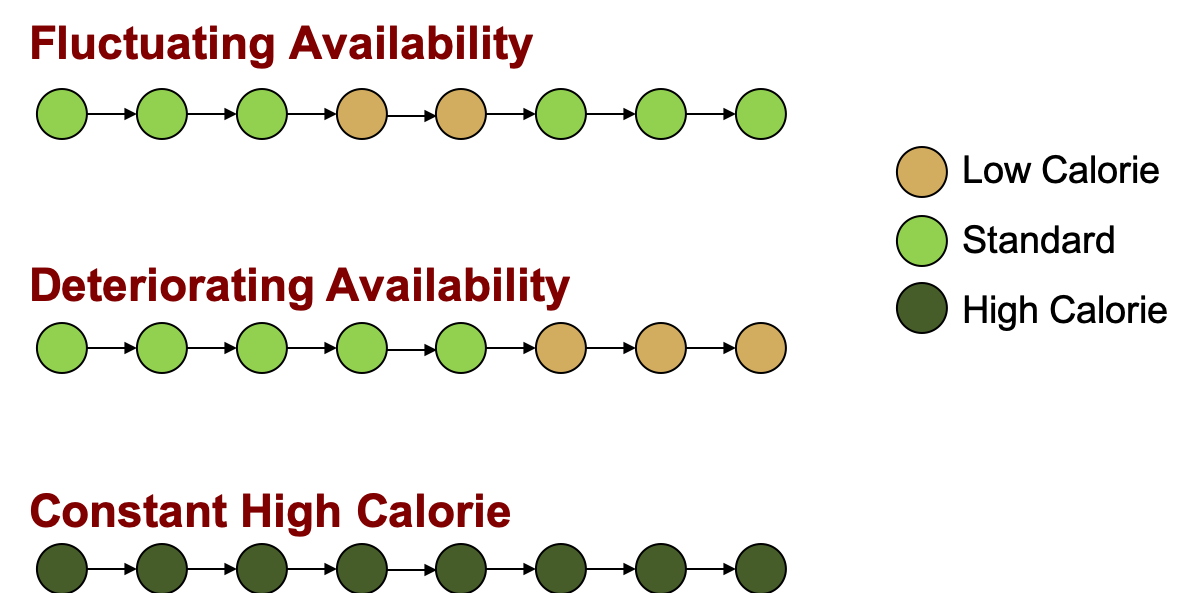Experimental evolution of flexible allocation strategies

All organisms, from microbes to humans, share the fundamental requirement of coordinating resource allocation to competing structures and functions (e.g., reproduction and somatic maintenance) with resource availability. Increased allocation toward one function will necessarily pull resources away from other, competing functions. Given that all environments vary, organisms must coordinate resource availability with allocation among competing functions (e.g., reproduction, somatic maintenance, and storage). One of the major goals of research in our lab is to increase our understanding not only how the coordination of allocation with nutritional conditions evolves, but also the genetic basis of the mechanisms by which this coordination occurs. We are using the DSPR system to study how this evolution occurs across the genotype to phenotype map.
Our lab is explicitly testing predictions for how resource allocations will evolve in different nutritional regimes using an experimental evolution approach. We are maintaining twelve replicate lines from an admixed synthetic population derived from the DSPR lines in three different resource availability regimes designed to select for divergent resource allocation patterns: 1) fluctuating resource availability mirroring the pattern predicted to select for allocation to survival under low resource conditions, 2) a deteriorating environment, designed to select against increased allocation to survival under low resource conditions, and 3) a constant high resource environment. These treatments mimic a range of resource availability patterns, and observation of the phenotypic responses to these conditions will directly inform evolutionary models.

We are currently, 1) tracking genotype and haplotype frequency changes across the genome over evolutionary time, and 2) tracking a suite of allocation phenotypes such as genome-wide gene expression, the complete energy budget, lifespan, and weekly fecundity. As these phenotypes evolve in response to these treatments, we are characterizing corresponding changes across the genotype to phenotype map, providing an integrated, unprecedented look at microevolution in action. You can see an example of this evolution happening by looping the video below, which shows how haplotype frequencies change across one chromosome arm in one selection line over several generations.